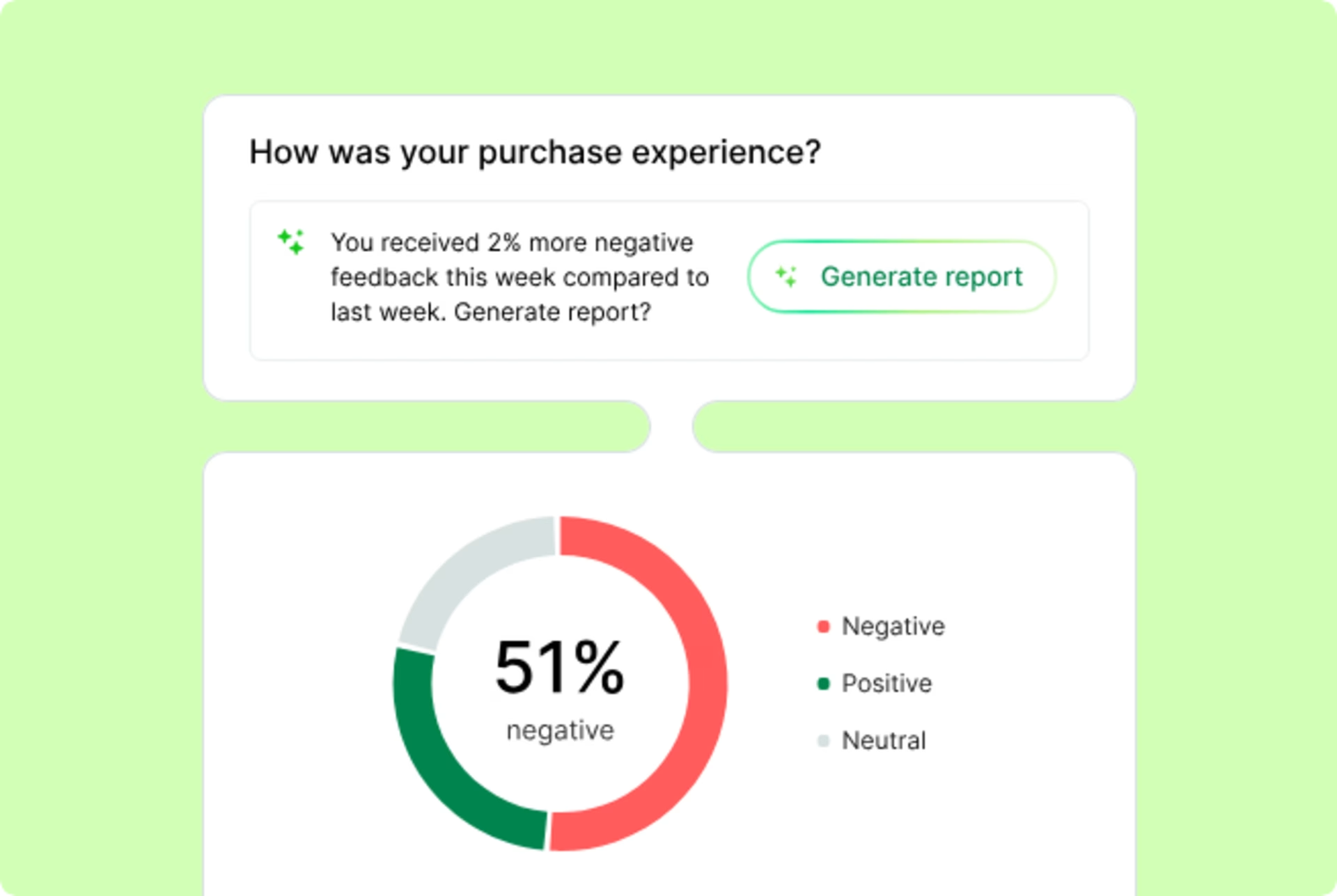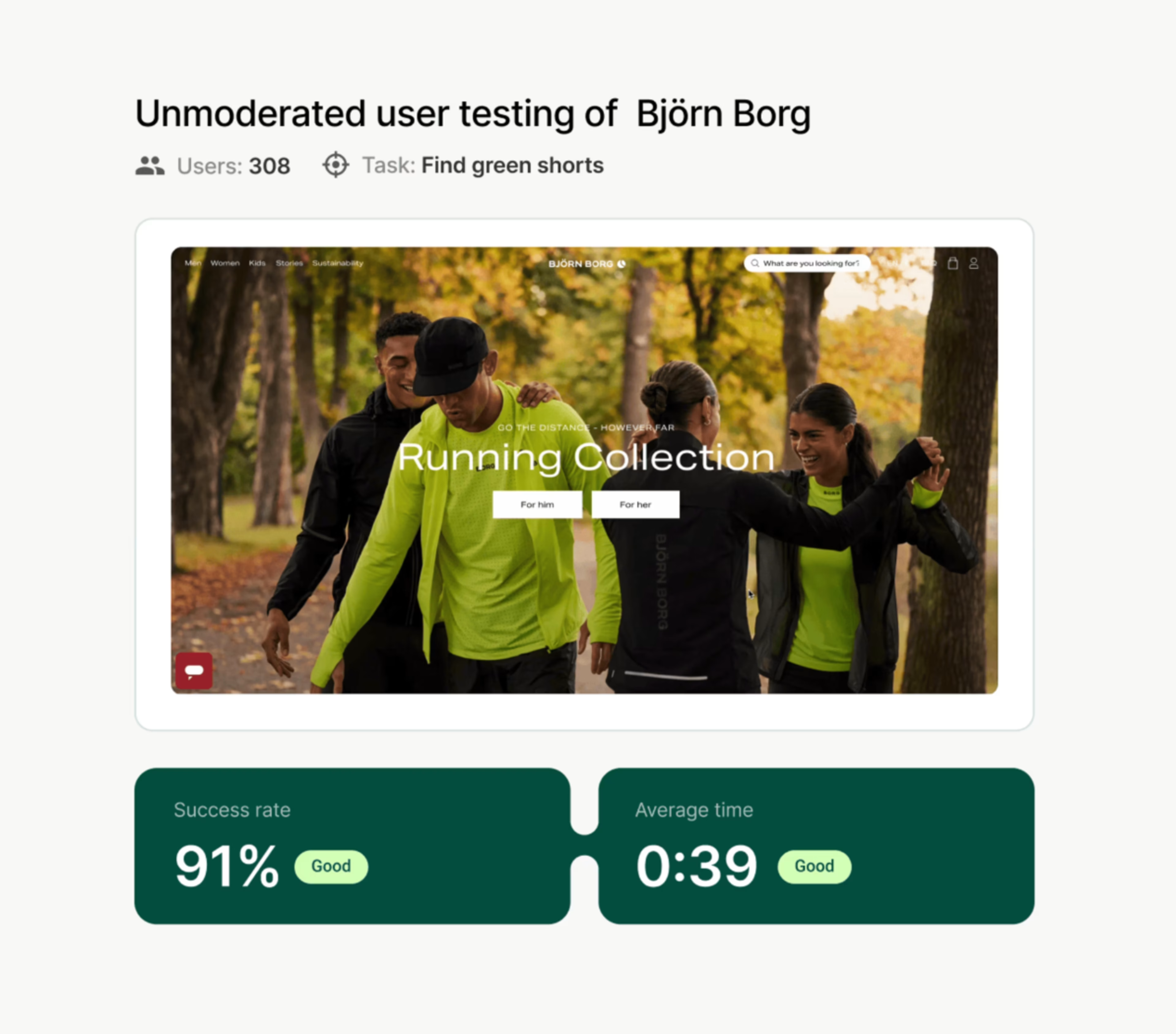Designing a successful website is a blend of art and science. The goal is to make your site look appealing while guiding visitors to take specific actions—like signing up for your email list or making a purchase.
With so many steps—like mapping user flows and building product pages—it’s easy for design issues to creep in, and while they might seem minor, poor design can erode user trust and cost you significant revenue.
In this guide, you’ll learn about 5 website design problems—why they matter, how to spot them quickly, and the simplest ways to solve them while putting your visitors first. The result? A website that turns visitors into customers, and customers into loyal brand ambassadors.
1. Poor navigation and flow
Your website visitors would call this problem: “Where do I look or go next?”
Telltale signs of unclear navigation and a confusing user flow include
A navigation bar that’s in an unusual spot, or laid out in an unconventional way
A main call to action (CTA) that doesn’t stand out or isn’t visible during the user journey
A navigation menu and other links with names that were supposed to be creative or funny, but actually confuse the visitor (like ‘magazine’ instead of ‘blog’)
The consequence of poor navigation and flow? Visitors, even when they’re your ideal customer profile, won’t know what to do—and they’ll exit before your website can make an impact.
How to spot it?
First, note what your navigation bar and CTAs look like right now. Are they where your visitors would expect them to be? Are they clear, visible, and straightforward?
Then, check your quantitative website analytics for these indicators of confusing buttons, links, and next steps:
High bounce rate: many visitors abandon your website without taking any action or viewing other pages
Low session duration: a potential indicator that visitors aren’t sure how to proceed
Low conversion rate: a low percentage of traffic that takes the action you want them to (signing up to your email list, downloading a resource, making a purchase)
Keep in mind that what high and low mean in this context depends on your business, industry, and expectations. Industry benchmarks can be useful, but they don’t take the specifics of your business and your customers into account.
🔥 If you’re using Contentsquare: create a dashboard to easily monitor metrics like average session duration, conversion rate, pages per session, and bounce rate.
![[Guide] csq dashboard](http://images.ctfassets.net/gwbpo1m641r7/29DNjVyXNcLTQEAi1PxQ2Y/2d0a774f1206c69ffa0850873bc33d89/csq_dashboard.png?w=3840&q=100&fit=fill&fm=avif)
Example of a dashboard in Contentsquare
How to solve it?
Tap into an experience intelligence platform (like Contentsquare👋) that gives you more context about a navigational issue, with tools like:
Session Replay: look at what visitors do right before they leave, why they rage click (i.e. click repeatedly on the same element), and for other signs of confusion
Surveys: ask visitors a question like “What’s stopping you from taking the next step?” on pages they linger on
Heatmaps: explore what’s visible to visitors as they navigate a page—maybe a key link or button is hidden from view
Heatmaps showed us that very few users scroll down beyond our hero, so when redesigning our landing pages, we used this information to redesign only that section. This reduced our costs in terms of design and engineering overhead whilst delivering a 15% increase in our conversion rate.
After you've done all of the above, make a list of design elements that seem to be a bottleneck and work through that list to implement improvements. These can include:
Moving a CTA button
Tweaking copy and colors
Redesigning your navigation bar layout
Changing how your page renders on different devices and screen sizes (more on that later)
2. Visuals that don’t resonate
Folks who visit your site might call this one: “Am I in the right place?”
You have this common website design problem if your website features photos, illustrations, or other visuals that don’t align with your target customer—their needs, goals, pain points, lifestyle, and how they describe themselves.
Here are a few examples:
Your offer serves adults with ADHD, but your website only features images of children
Your product is a modern software solution, but your website design is outdated
Your site features visuals that suggest hobby use of a product—like wall paint—but you’re targeting a professional audience and your products are for commercial use
The consequence of visuals that don’t resonate? A new visitor will immediately bounce from your website because they believe they’re in the wrong place. Simple as that. Think about wanting to buy towels for your guest bathroom, but walking into a bakery instead. “Oops, wrong door,” you think to yourself, and exit so you can look for the correct store. That’s how it feels to view a website that doesn’t look like it’s intended for you.
How to spot it?
Be on the lookout for indicators like:
High bounce rate: the majority of visitors leave almost instantly
Low time on page for key pages: for example, check if users stay on your landing pages for only a few seconds before leaving
🔥 If you’re using Contentsquare: leverage Heatmaps to visually analyze which parts of your landing pages capture attention and which ones are ignored. This helps you identify whether your visuals align with what your visitors expect and engage with.
![[Visual] Heatmaps types](http://images.ctfassets.net/gwbpo1m641r7/44qPX6Nyu2v2i9pGM8JdIE/e1ccfd573959295483bb4b867ca7e57f/Heatmaps___Engagements__3_.png?w=2048&q=100&fit=fill&fm=avif)
Contentsquare Heatmaps lets you create different types of heatmaps to see what clicks with your users
How to solve it?
Rely on your user personas to drive your web design. If you already have user personas, revisit them and ensure that designers, developers, and writers use them in their work.
If you don’t already have user personas, this is your sign to create them. It can be as simple as defining these elements:
Who they are: the core demographic or a job title, like ‘accountant in a fast-growing start-up’
Their goals: what they want to achieve, and how your product or service might fit into their life
Barriers and concerns: pain points and challenges that prevent them from achieving their goal
The best part is, you don’t have to come up with these elements out of thin air—you can lean on real data about real humans. Here’s how:
Survey your audience: use a pop-up on your most-visited pages, like your homepage and product pages.
Run market research: gather insights from user feedback and behavior to build accurate personas that reflect your audience
🔥If you’re using Contentsquare: before you set out to create your personas, leverage Contentsquare’s Interviews tool to get direct insights into real user challenges, goals, preferences, and behaviors. Recruit from your own network or tap into a diverse pool of 200,000+ users, and schedule interviews at your convenience.
Identify key themes from interview insights, then segment them to create distinct personas. This enables you to tailor your content and design to better meet the needs of each group.
![[Visual] interviewee demographics](http://images.ctfassets.net/gwbpo1m641r7/7fuVjHfbTdEyjWLUF0m3kO/4e737e60faac8365dc76acc65b9a2f3a/interviewee_demographics.png?w=1920&q=100&fit=fill&fm=avif)
Contentsquare’s Interviews tool lets you recruit and interview members of your target audience to collect real user feedback
3. Esthetics over information
In your website visitors’ words, this web design problem could be called, “It looks beautiful, but doesn’t help me get to where I want to go!”
In short: you’re prioritizing eye-catching design and layout at the cost of clear copy and flow of information.
Here are some potential causes of this:
Using a beautiful but inflexible website template, which forced you to cram information into predefined boxes and layouts
Following ‘best practices’ that don’t take into account your specific audience or use case (because it’s someone else’s experiment, opinion, or recommendation)
Designing your website before defining the flow of copy and messaging throughout
Basing your website design on a journey you think your users take
The consequence of prioritizing esthetics over information? Your ideal customers and target visitors drop off your page because they’re not finding the info they need—where they need it—quickly enough.
So even though they were potential customers, you’re losing them and leaving revenue on the table.
How to spot it?
This isn’t a typical poor design issue—it doesn’t necessarily look bad—but it means a page isn’t serving the purpose it’s supposed to.
That’s why it’s trickier to spot it as there are no obvious signs, like sky-high bounce rate with some other design problems, to instantly indicate the issue. You need to dive deeper with tools like:
Customer journey mapping: see the order of pages people view and where they drop off
Funnels: map out the checkout flow, track where potential customers abandon the checkout process, and analyze conversion rates for each step to optimize the path to a completed purchase
🔥 If you’re using Contentsquare: start with our Journey Analysis tool to see how users move through your website, then leverage Funnel Analysis to spot where they’re dropping off. Are they stuck on the payment page? Or maybe the shipping section is confusing? Identifying these website design issues lets you make targeted fixes that keep users on track and boost conversions.
![[Visual] funnel-analysis-in-Contentsquare](http://images.ctfassets.net/gwbpo1m641r7/54wqippOGkxHsJp3dO0xU5/5dc87604d0aef8a3940be461c47f91b5/funnel-analysis-in-Contentsquare.png?w=3840&q=100&fit=fill&fm=avif)
Contentsquare’s Funnel Analysis tool shows where potential customers drop off during the checkout process
Once you identify the pages where you seem to lose the most visitors, scan them for any obvious user experience (UX) issues that would stop people from progressing, like hidden buttons or weirdly sized text.
If there are no clear reasons for users dropping off, there’s a chance they aren’t finding the details and answers they need to keep going.
How to solve it?
Imagine you have a software-as-a-service (SaaS) website and a visitor is on the pricing page preparing to sign up, but they can’t figure out whether they need a credit card to get a free trial. Your page doesn’t clarify, and this detail is somewhere on your FAQ page, which users can’t access from the pricing page, so they drop off.
🔥If you’re using Contentsquare: place surveys on key pages and ask your users about their concerns so you can empathize with them, and make the necessary design and copy tweaks to improve their experience.
Here are some questions you can ask:
What’s stopping you from [taking X action] today?
What are your main concerns or questions about [name]?
What can we do to make this page better?

Contentsquare’s Surveys tool helps you detect common web design issues
4. Prioritizing the desktop experience
Your website visitors would name this one: “I know exactly what to do when I’m on my laptop, but I struggle on my smartphone.”
Because of their smaller screen or working surface, building a mobile and tablet experience brings two risks:
You either take away key elements or hide them, which then makes it harder for a user to progress
Or you cram too much on the screen, creating clutter and a frustrating experience, so actions like tapping on a small button become frustrating
The consequence of only focusing on desktop experiences? Frustrated users who leave your site without doing what they wanted to do—meaning they might never return because they just can’t be bothered. What’s more, it impacts your SEO—search engines like Google use mobile-first indexing, which means they use your website’s mobile performance to decide on its ranking—even for desktop users.
How to spot it?
First, use tools like Google’s Mobile-Friendly Test and HubSpot’s Website Grader to check if your mobile site is responsive.
Then, check your website analytics (with a platform like Contentsquare 👋) for desktop users and mobile users, and compare them. If mobile experience is an issue, you’ll see:
Higher bounce rate
Shorter sessions
Lower conversion rate for mobile sessions compared to desktop sessions
Mobile users may not have the same goal as desktop users; for example, they may not be ready to just whip out their credit card and make a purchase, but they might want to research all of their options and sign up for a discount or a valuable piece of content while they’re on their phone during a commute.
It's crucial to make your user's journey through your mobile site seamless and their goals easy to achieve.
🔥 If you’re using Contentsquare: use our Speed Analysis tool to compare the page speed of your desktop and mobile sites. Identify slow-loading pages and understand how site speed impacts user behavior.
Additionally, use the Error Analysis tool to detect API and JavaScript errors, providing actionable recommendations to help you resolve delays and improve performance.
Use this data to make targeted improvements that enhance load times and reduce bounce rates to deliver a smoother, faster experience for all users—because speed isn’t just nice to have; it’s essential for keeping visitors engaged and converting.
![[Visual] Speed Analysis & Improvements](http://images.ctfassets.net/gwbpo1m641r7/3jmq50umWVasSMqnBb56fk/a22722e210677f5530f79dbce1f37434/Speed_Analysis___Improvements__2_.png?w=3840&q=100&fit=fill&fm=avif)
Use Contentsquare’s Speed Analysis tool to compare the performance of your website’s desktop and mobile versions
How to solve it?
Once you learn mobile experience is an issue, dig deeper into the experiences of mobile users.
For example, analyze how users behave when they’re on specific pages that seem to be the issue—what they ignore and what they focus on.
Here are three ways to do that:
Watch mobile session replays to see whether users scroll up and down in confusion or frustration, where they tap, what they overlook, and what’s completely out of their view due to how your website renders on mobile (in Contentsquare, you’ll find mobile sessions by switching from All to Mobile)
Pro tip: mobile session replays aren’t revealing an obvious issue? Prioritize watching those with high frustration scores.
![[Visual] session replay](http://images.ctfassets.net/gwbpo1m641r7/5roijCBMnaTBnNF0BkHamu/a2e08bbddc5c75f7a04a98b5dfc8d5ad/session_replay.png?w=3840&q=100&fit=fill&fm=avif)
Save time analyzing session replays in Contentsquare by filtering by frustration score
Analyze mobile heatmaps to see how far down users scroll on average, whether they tap on elements that aren’t links or buttons, and which sections get the most attention
Run page- and device-specific surveys to get more context behind mobile users' behavior
Then, use these insights to outline the potential barriers you’ve uncovered in the user journey on mobile. These might be:
A navigation bar behind the hamburger icon that’s too small to tap
Text that’s too long for a small smartphone screen to invoke action
Links that don’t display correctly on mobile (aka don’t look clickable), so users miss them
Once you have a list of users' pain points on mobile devices, bring designers, developers, and writers together to build and implement changes. These might range from small layout changes to copy rewrites that help you create a responsive design.
🔥 How Time4Sleep improved the mobile experience for their customers
Time4Sleep, an online retailer that sells beds and mattresses, partnered up with CRO agency Epiphany to uncover the troubles their visitors had on mobile and fix them.
They used data from Google Analytics and layered it with session replays, heatmaps, surveys, and in-person user testing to define several friction points in their customers’ flow through the mobile site.
Once they built several variations and tested them, they ended up with a 63% boost in mobile conversions. With 70% of Time4Sleep’s traffic coming from mobile, this was a massive win.
5. The white space conundrum
Your site visitors might call this one “There’s too much happening at once” if you don’t have enough white space, or “Why are things floating so far from everything else?” if there’s too much white space on the page.
In web design, white space (aka negative space) is the space left around and between elements on a page that helps important elements stand out, giving visitors a chance to rest their eyes and focus on a specific CTA or copy.
When you don’t have enough white space, there’s clutter on the page—a surefire way to confuse and frustrate visitors. And when there’s too much of it, your pages become hard to navigate.
The consequence of insufficient white space, or too much of it? Either option can be a point that confuses users and drives them away before they give your content and offers a chance.
How to spot it?
This is essentially impossible through quantitative data and regular website monitoring.
Besides looking at your website design with an unbiased eye, your best bet is digging into qualitative clues. Here’s how:
Analyze responses to surveys that you launch right before visitors leave
Note the issues users run into during support conversations
Conduct interviews and ask users about your website’s design: whether they think your page is too cluttered (too little white space), or if they can find the info they need without having to scroll down a lot (too much white space)
How to solve it?
With the help of a designer and developer, solving the white space issue is simple and quite quick: you either add more or less of it.
The trick is in tracking the impact of those changes. Your best option is to run a split test on the pages you’re tweaking. You can see whether these tweaks helped by
Showing a feedback widget or survey on a variant
Comparing heatmaps for your control and variant
Watching replays of users exposed to the variant
Pro tip: use Contentsquare to run a concept test (aka preference test) survey with your visitors, letting them pick between two images that showcase your pages with different degrees of white space—so you can see which one they prefer.

Run a concept testing survey to see which version of your web design users prefer
Avoid web design problems by putting users first
Nailing your web design means your visitors feel like they’re exactly where they should be every time they visit your site. They might be researching, buying from you for the tenth time, or just passing the time—their experience matters in all of those cases and beyond.
Your website isn’t there just to look good—it’s to help users find what they need by leading them to the logical next step, and keep them coming back. That’s what keeps them happy, and your business healthy.
![[visual] Explore common web design problems and solutions. Learn how to prevent poor design that turns users and customers away.](http://images.ctfassets.net/gwbpo1m641r7/3OEdIwpIl57BbzopljZqFD/951fe8e53510d18d57285cf1212e6c3d/AdobeStock_718889869.jpg?w=3840&q=100&fit=fill&fm=avif)
